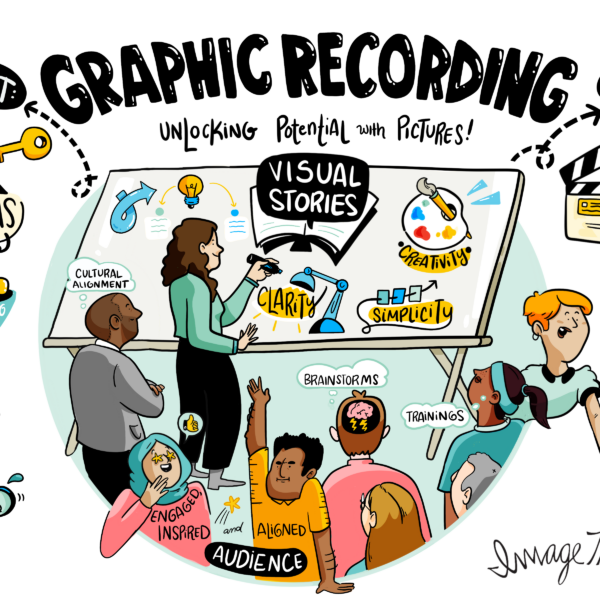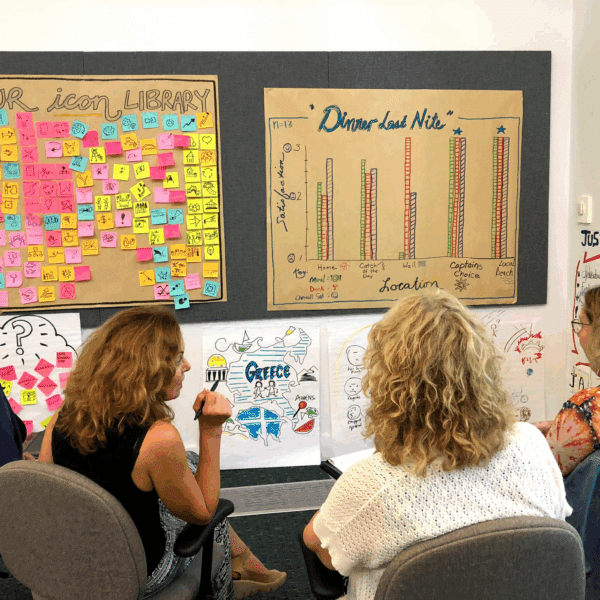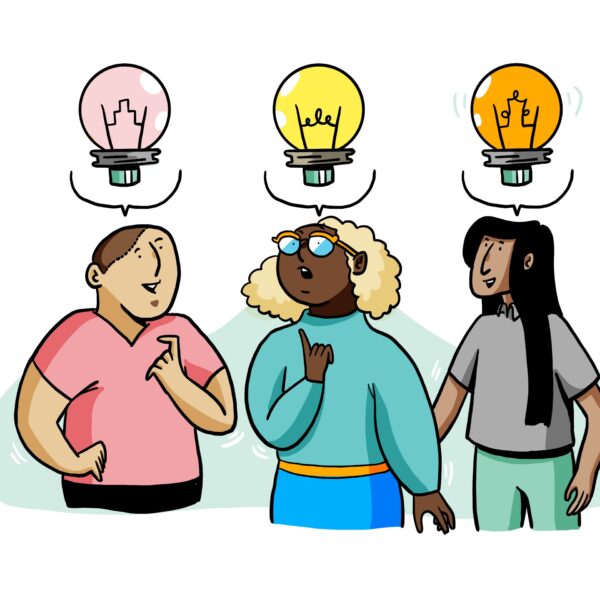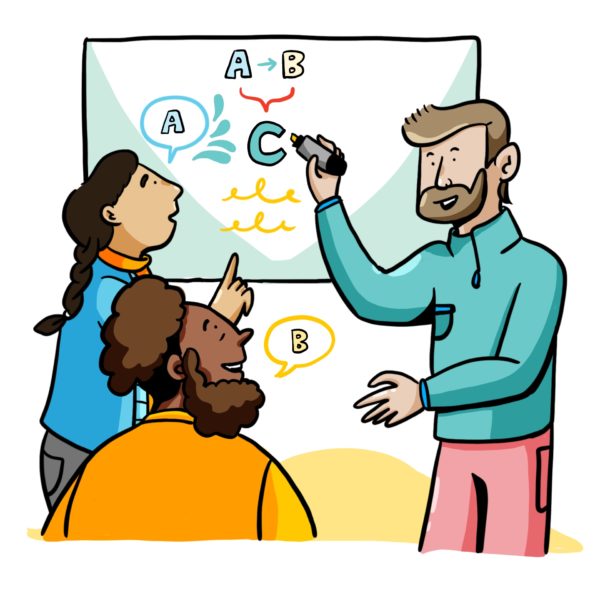Individual vs. group brainstorming
Brainstorming is an essential tool for fostering creativity and innovation. It is a cornerstone of the creative process, playing a crucial part in idea generation and problem solving. As such, it is a practice that is consistently leveraged by individuals, teams, and organizations alike.
Since brainstorming can be conducted individually or in a group setting, it begs the question: solo or together, what’s better? This article aims to weigh the pros and cons of individual and group brainstorming. In addition, we will explore how visualization, and visual tools like graphic recording and white boarding can complement both types.
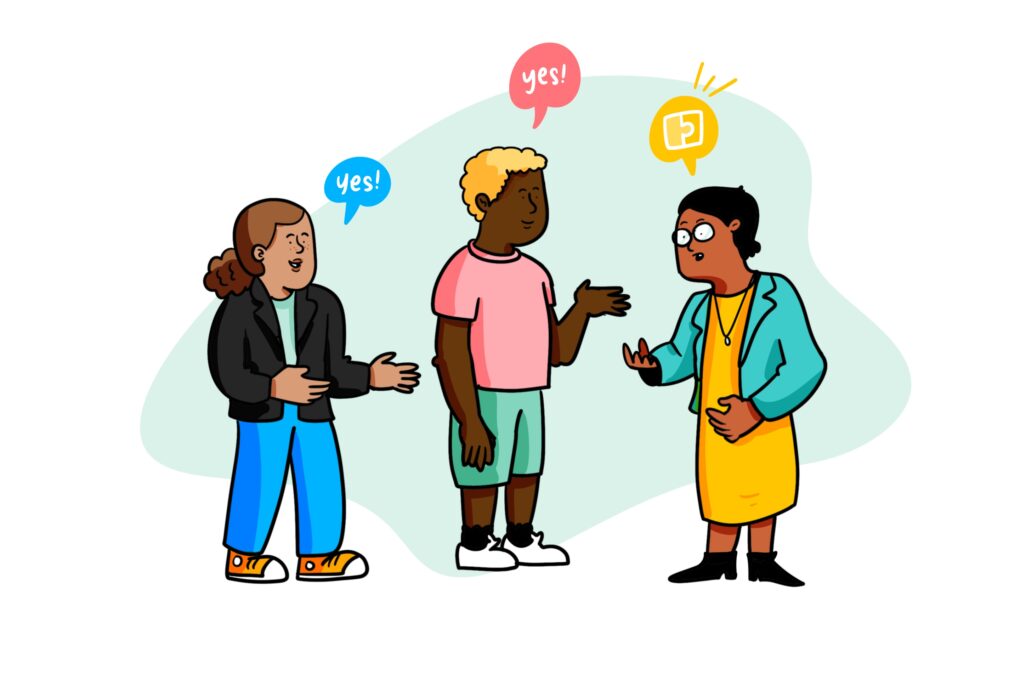
Group brainstorming
Group brainstorming leverages the perspectives, skillsets, and diversity of the larger whole. It’s these facets that open a group to a wealth of ideas and innovative solutions. Group brainstorms enable collaborative synergies to form, as members can build off of one another’s ideas in real-time. Although best practices aim to limit judgement in a brainstorming session, ideating in a group makes the feedback loop more immediate. When brainstorming sessions advance to a deeper level, a group can critique and refine ideas quickly. A group setting also has the added component of social interaction, which boosts engagement and motivation.
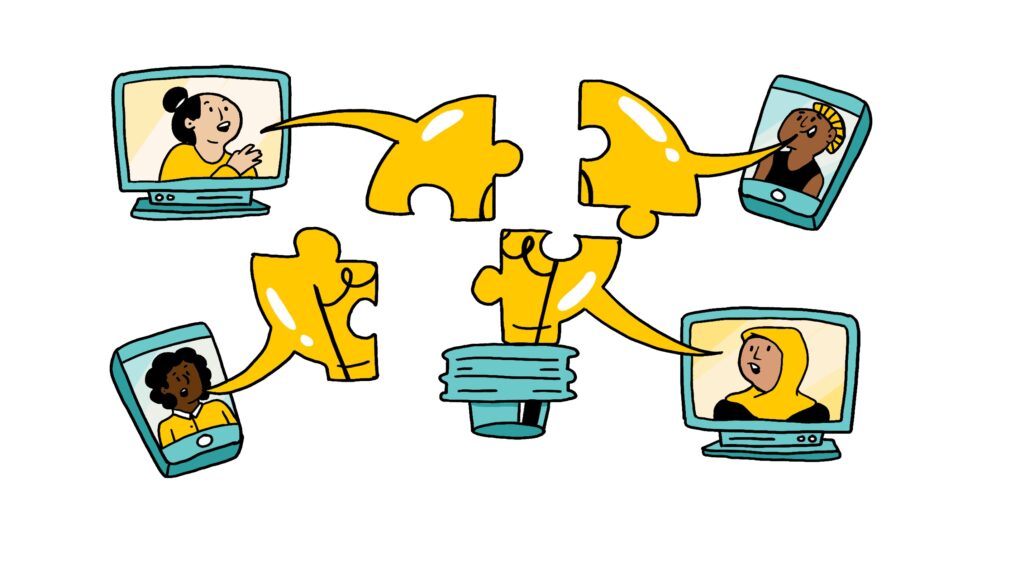
These perks are not to show that group brainstorming is without flaw. In fact, there are some cons associated with brainstorming in a group that can actually stifle creativity and the flow of ideas. Group settings create a tendency for individuals to conform to more dominant opinions – known as groupthink. In addition to groupthink, social loafing can happen while ideating with others. Social loafing occurs when individuals grow reliant on other members of the group to do the “heavy lifting” on the creativity front – which ultimately leads to less contributions. Ideating with others can also create conflicts and challenges, such as clashing personalities, distraction, and off-topic conversations.
Individual brainstorming
Solo brainstorming involves individuals ideating independently, at their own pace. This form of brainstorming promotes deep focus, allowing individuals to work without interruption. In addition, individual brainstorming provides the luxury of freedom and flexibility. When operating solo, there’s no need limit your personal exploration of ideas, to compromise, or to yield to the influence of others.
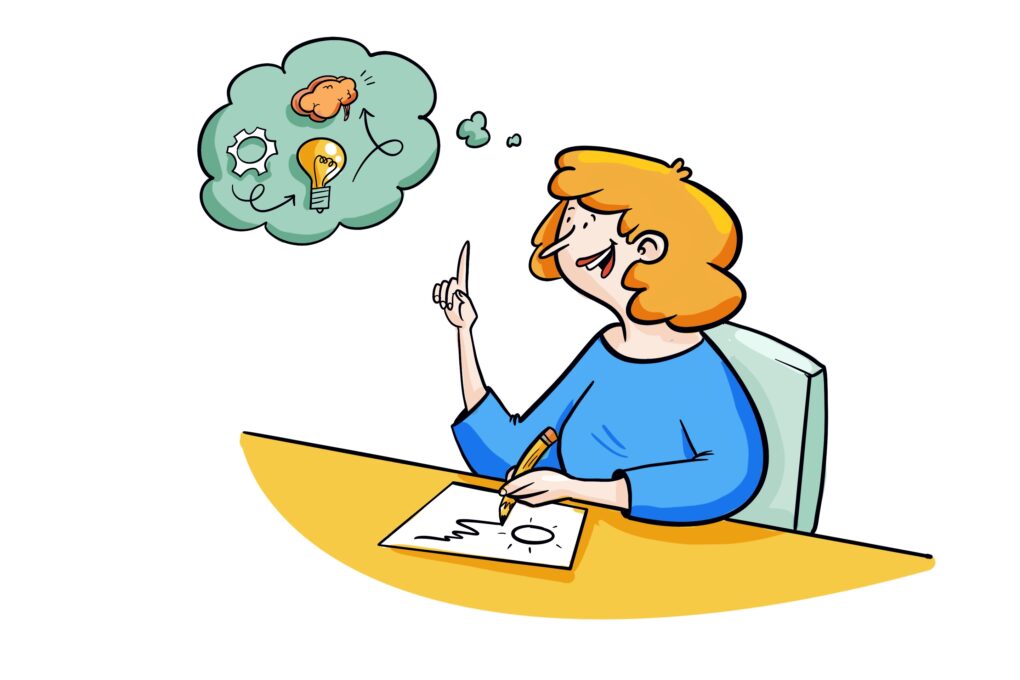
Like group brainstorming, individual brainstorming has its drawbacks as well. Additional perspectives can build upon and challenge ideas as they are generated. Lack of diverse viewpoints can shrink the pool of ideas available to you, and cause creativity to stagnate. Individuals who brainstorm alone miss out on the collaborative energy, synergy, and inspiration afforded in a group setting. As a result, brainstorming solo can be draining and isolating.
The role of visualization in brainstorming
As a visual strategy firm, ImageThink will always advocate for the use of visuals and visual thinking in work. Visualization is a powerful tool for clarifying thoughts or ideas, fostering creativity, and cultivating engagement. For these reasons, it’s an invaluable addition to the brainstorming process – no matter if that process is done alone or with others.
Leveraging visual services like graphic recording or whiteboarding creates more dynamic and productive brainstorming sessions. In real-time, these tools capture and organize information, turning even the most abstract ideas into clear, visual representations. Oftentimes, seeing these items visualized can reveal connections and patterns that aren’t immediately apparent. By including visuals in brainstorming sessions, you guarantee stronger understanding, collaboration, and innovation by and large.
How visualization enhances group brainstorms
Visualization, along with visual tools and services play a pivotal role in enhancing group brainstorming sessions. By including visuals in a group brainstorm, you increase participation, boost engagement and collaboration, and ignite creativity.
The act of visualization largely benefits the ideation process in groups by ensuring focus, clarity, and inclusion. Visuals give weight to the thoughts of all members, encouraging those involved to participate more – especially in the case of those who participate less infrequently. With more ideas flowing from all sides, attendees can expand and explore ideas in real-time.
Since a major aspect of graphic recording and whiteboarding is to document and sort information, it also produces a physical track record of the group’s efforts, ideas, and action items. ImageThink understands that ideas are invaluable, so we don’t let any go missing in the creative process.
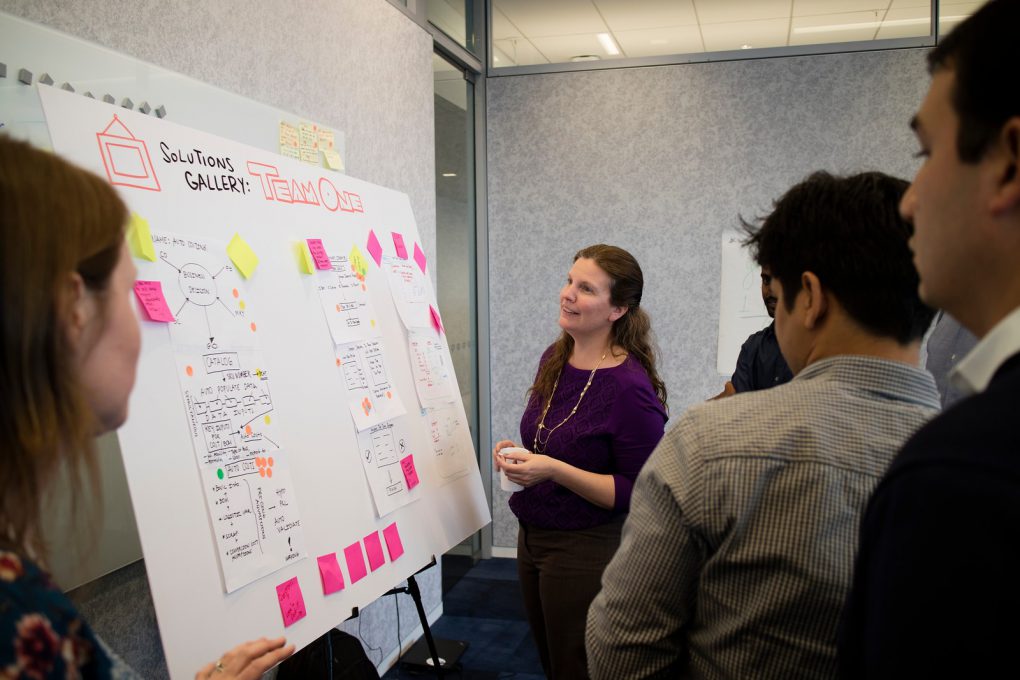
As a result of including a visual strategist in your brainstorming session, groups experience energizing, rewarding collaboration, and a visual roadmap of all efforts, ideas, and action items.
How visualization enhances individual brainstorming
In individual brainstorming, visualization is equally beneficial. With visuals, you not only increase the amount and quality of ideas, you guarantee the continuity and development of them.
Just by integrating visual notetaking into the creative process, you afford yourself with the opportunity to document thoughts and ideas in a dynamic way. Rather than writing out an idea, visualization allows an individual to see and pick apart an idea’s unique parts. In this way, visualization also has the power to reveal gaps in one’s thinking and makes it easier to see connections within ideas.
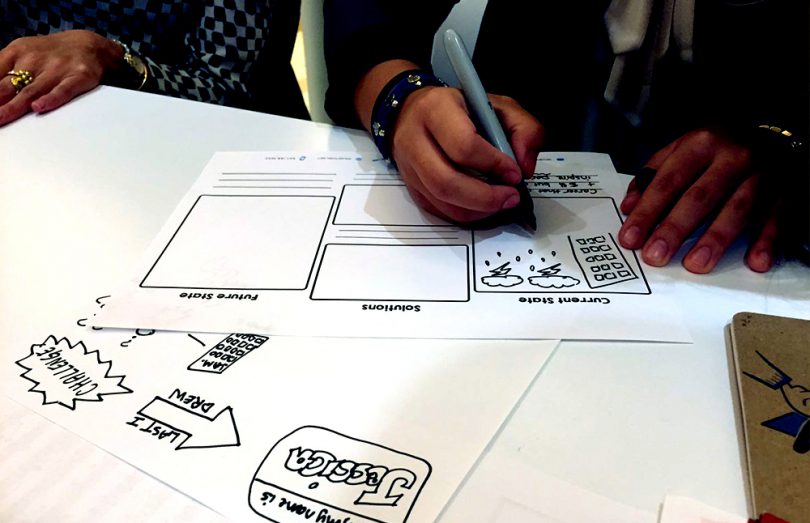
Taking it a step further with visual tools like mind mapping, creative exercises, and visual templates provides structure to idea exploration. These visual tools enable creative stimulation, inspiring the creative thinking that leads to better ideas and exploration.
Choosing the right approach
So, what’s the right approach? When deciding between group or individual brainstorming, consider the following factors:
- Project scope – What is the nature of your project? Individual brainstorming may benefit a simple task or problem, whereas something more complex may require a more collaborative approach.
- Desired outcome – What is the goal of your brainstorm? Do you hope to yield a large quantity of ideas, or develop and refine a select few? Whatever the end goal is, consider it in relation to your approach.
- Team dynamics – If you’ve determined that group brainstorming is the right approach for your project, do consider the influence of team dynamics. What is the size of the team? What are the working styles of the members who are to be involved? How diverse is the group?
Ready to visualize your ideas?
You might find that instead of selecting individual or group brainstorming for the purpose of your project, that a mixture of the two is better suited. With individual brainstorming, you can generate a wide range of ideas and later take them to a group for further exploration. This hybrid approach leverages the strengths of individual creativity and collaborative synergy.
The path to better ideas
Now that you know the ins and outs of individual and group brainstorming, will you ride solo or with friends? The key is to choose the approach that best fits the needs of your objective. Whatever that may be, be sure to include visuals to ensure your brainstorming session is productive and creative. To learn more about incorporating graphic recording or whiteboarding into your next brainstorm, get in touch with ImageThink today.
